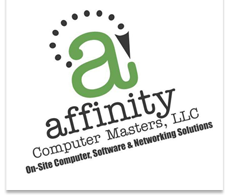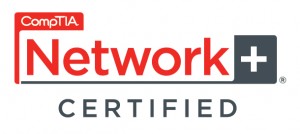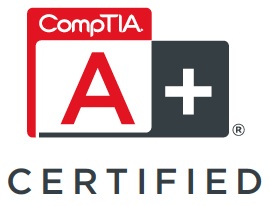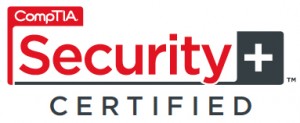Back to Backup
May 05, 2014 An affinity for News Kurt R. Rahlfs Back to Backup Many of you have heard me harp on the importance of your data and backups. I became a big fan of correct backup procedures when, in graduate school, I lost a term project a week before the end of the term. This was because the company I was working for backed up its data by writing over last week’s backup. I destroyed my work just before the backup took place so my empty set of data wrote over the mostly complete set of data from the previous week. This is more oriented towards businesses from small to large but the basics apply to the home user and the hobbyist who records income in quicken or QuickBooks. Data Protection The most common failure of a computer is the hard disk. It is a mechanical device so it can just stop from the time you take it out of the box to years after. When it goes and gets replaced you are left with even less than you had when you got it from the manufacturer. Though not really a backup, the first line of protecting your data is to use one of the approaches to “mirror” your data on more than one disk. This way if one disk fails, you are still up and running on the other disk. You can then replace the failed disk with minimal down time. Otherwise you may have days of recovering your data and reloading all the programs that had been loaded since the computer left the assembly line. Basic Backup Though you may seem to be protected by the disk mirroring, it doesn’t protect from things that you may do unintentionally (like me for my term project) or that hackers, thieves or nature can do. Computers have come to me with anything from sewers backing up to fires and tornadoes. This protection needs a backup. The first backup I now recommend is a cloud backup. The main advantage of this is that the backup is not near the computer. Backups with tapes or disks that are attached to the computer only protect you from the mistakes you make. The more common problems are not protected by local backups. Help The national business stores that work on home PC’s, like Best Buy and Apple, don’t have a staff of industry certified technicians. At affinity all our technicians have A+ certifications to work on any of your computers and Net+ certifications to work on your networks and Internet. A Security+ is also available to protect your computers. To always get an industry certified technician call affinity Computer Masters at...
read moreStorage or Memory? Is it Virtual?
Do you ever get a message about virtual memory being low. When people approach me about this warning many say they have moved their pictures off the computer and have removed programs and they still get this error. Some say they have checked their computer and it says they have hundreds of gigabytes available. Why is it saying it doesn’t have enough? If the message is not caused by a virus then doing the repairs and checks the people have done usually wont help the situation. They are freeing up storage not memory. In our lives they seem to mean the same thing but in the computer they are names for devices that have different purposes. In my last blog I talked about YOUR DATA. Data is what is stored on your hard disk, hard drive or storage. Along with your data are the programs that have been loaded on your computer. The amount of information stored on the hard disk is amazing so there is a lot of it. Modern computers have over 1,000 gigabytes to store all that info. Gigabyte is just a measure of how much can be saved. Most people use less that 10 gigabytes and windows and programs use perhaps 50. In contrast memory is much smaller. It usually is less than 8 gigabytes. It is smaller because memory only has to retain what the computer is working with right now. It is also faster than storage. It is used so that the computer can quickly do what you want. The rest is still in storage. Now back to our original message. The virtual memory is low. This appears when you have so many programs running that your memory becomes full. In the old days the computer would freeze or crash. Now the computer carves out some space on the hard disk and pretends that is memory. However, this slows down the computer tremendously. And you can hear the hard disk buzzing or rattling when this happens. Virtual memory will be created up to a point. You also get that message if your hard disk is so full that almost nothing more can be put on it or pass a limit set in the computer. The former scenario is when removing pictures etc. will help. They fix the symptom only. It does not free memory but by freeing up disk space so virtual memory can be created. What is also needed is to add memory. Finally, adding memory and clearing storage can help when virtual memory is low. But because memory is faster than storage it will also help many slow computers are that way because they are having to use the virtual memory rather than the memory that can be put in your system. Questions? Ask at a4b@affinityCM.com or IM me at kurtrr on skype. Your question may be in an upcoming...
read moreWhat is Data?
Some times when getting a computer repaired a technician may warn you that certain repairs will cause you to loose all your data. Now, is that important? Why is the technician telling you about your data? Why is data and backups always seem to be in the same sentence? For computer people the computer is basically that chunk of metal and plastic that sits under your desk or on your lap, if you have laptop. The rest is programs and data that is saved in the mysterious thing called a hard drive. This is also called storage. This is not to be confused with memory. Memory vs. storage will be taken up at a later date. We’ll first discuss programs. Stick with me then we’ll get to data. When you start your computer one of the first things it does is to start a program to help you use your PC. This program is called either Window, Mac. Or Linux. It is this program that asks you to login or that shows you the screen with your icons. You can then click on an icon to tell it what you want to do. If you are browsing the web you may have clicked on Internet Explorer, the big blue “e” icon. Internet Explorer is another program. Windows starts it for you when you click on the “e” icon. So a program can start another program. There are many programs. Some of them are called Word, Outlook, Quicken, Photoshop,… these let you write letters, send and receive email, keep track of money, and work with pictures. Here is where YOUR DATA comes in. The above programs let you put things in your computer. Each thing you put in is a part of YOUR DATA. The computer sores a lot of other things but what you put in is the YOUR DATA that the technicians talk to you about. When you write a letter, your letter is your data stored on the hard disk by the program Word. Email you send and receive is stored on your hard disk. It too is your data. Your financial records and your pictures are all put onto your hard disk. They too are your data. It is your data that is backed up by backup programs. Your data is at risk when hard drives fail or if a virus scrambles what’s stored on the hard drive. It is your data with which a computer repair person should be most concerned. Everything else can be repaired or replaced. So, when asked if you need your data. Think about what has been put into your computer and what it will take to get it there again. Weigh that effort against the cost of data recovery that the tech. may quote you. If you can get your things again maybe you don’t want to pay for that data recovery. Pictures are part of MY DATA Questions? Ask at a4b@affinityCM.com or IM me at kurtrr on skype. Your question may be in an upcoming...
read moreLicensure and software replacement
With today’s global exchange of data and information, issues of licensing and copyright are all the more confusing. When it comes to the programs and applications you use in your personal and business computing, it is important to understand what those laws mean for you. What can be replaced Many times the question of license never comes up until a hard drive has crashed, the operating system has been rebooted and the computer user discovers that their favorite programs are missing, or unable to be used. This is a good news/bad news scenario. The good news is, if you have your license key, and a copy of the software, or download password, those programs are likely able to be restored. The bad news is that most users don’t know they need those things, and will have to repurchase the software in order to get it back. What you will have to buy If you did not record your license key number, keep the packaging it came with, or write down serial numbers for downloaded software, you will probably need to buy new software. Unfortunately, without these items there is no way for the software maker to ensure that you did in fact purchase a legal copy, and to protect themselves they will require you to repurchase. How to find your code keys (code of authenticity) 25 characters So, how do you get this vital information? Simple. With packaged software, you will look for a “code key” or “code of authenticity” also known as the COA, on the package, in the manual, or on the jewel case of the disk. This code is typically 25 characters and will be labeled. Keep your packaging handy, but also write, or print these into a file that can be kept safe with the title of the software and a list of when and where it was installed. For downloaded software, the COA is not as common. Many of the companies that sell download software generate their own serial number or code key. These can vary from 4 characters, up to the 25 character code. Write or print these out as well, and don’t just save them in your computer. Another option is to save them in a “cloud” document on a service such as Google Docs, or Drop Box. Downloaded software typically has email password, save...
read moreData Recovery
> >Symptoms of hard drive failure Symptoms of hard drive failure, or imminent failure can take on many forms. The computer may stall unexpectedly, files and programs may appear garbled, the screen may flash black, or blue, and in some cases, beeps are heard, indicating a problem. In many instances, the system will warn you. Whenever any of these things occur, if you do not have a current backup of your system, and it will start normally, make one immediately, or bring it in so we can backup your data. If the problem is not a hard drive, but rather some form of malware, other hardware problem, or virus, we can detect this quickly and make the necessary repairs to avoid data loss. In the case of a hard drive that has failed and will not start normally, there are two possible scenarios. Best Case: your data, or at least a portion can be retrieved using normal measures so that it can be restored onto a new hard drive. This is typically a job for the pros, and we can handle it for you in our lab. Any recoverable data will be backed up on to one of our secure servers, then burned to disk, or transferred to a new hard drive for you. Worst Case: If the hard drive is not merely corrupted, but is physically damaged, no data at all may be able to be recovered. In these cases a simple test will tell us and we can offer the services of a data recovery lab where the disk will be taken apart and mined for existing files that can be retrieved. This is very expensive, and results are iffy, but in the case of important information, or priceless media, it is available. Whatever the case, Affinity stands ready to see you through it. We will recover as much of your data as possible, as quickly and at the lowest cost we can. We will also help you to replace your hard drive, bring your system back online and walk with you through restoring your files, if they are...
read moreSo you think you have a virus
Virus, Spyware, and malware are terms that are often used interchangeably by non-technical users to refer to unwanted software glitches that attach themselves to your Operating System and programs and cause your system to run at less than peak efficiency, sometimes shutting it down completely. The good news is that a software problem such as a virus or malware does not attack the machinery of your computer, and can be removed. The bad news is, it can mean needing to reboot your operating system to make the removal complete. If you have followed our advice and have a backup system, this will cost you a couple of hours, but will not effect your data. If you have not, please accept our condolences, but much of your precious data may well be lost to the ether. Before you panic, here are some steps you can take. Virus Scan Most computers come with some type of virus and malware scanning software that will help you identify and remove the unwanted files. Since each of them operates slightly differently, we will not attempt to run through those steps here. Typically, you can find your anti-virus program in your programs list in the start menu. Most programs will take you step by step through the process of running them with onscreen prompts. Before attempting any scans, your should restart your computer in safe mode. To do this, shut the machine down and restart, while pressing the F8 button found in the top row of your keyboard. This will give you bootup options. Select “safe mode with networking” so that you can access the internet for downloads or to find advice if needed. Run your anti-virus and malware detection software in safe mode, allowing it to complete and remove any files it found. Once this is complete, restart the system normally and run the scan again to check for hidden issues. If your scan comes back clean and the computer seems normal, return it to normal use. If not, contact us for an appointment to complete the...
read more







Follow Us!